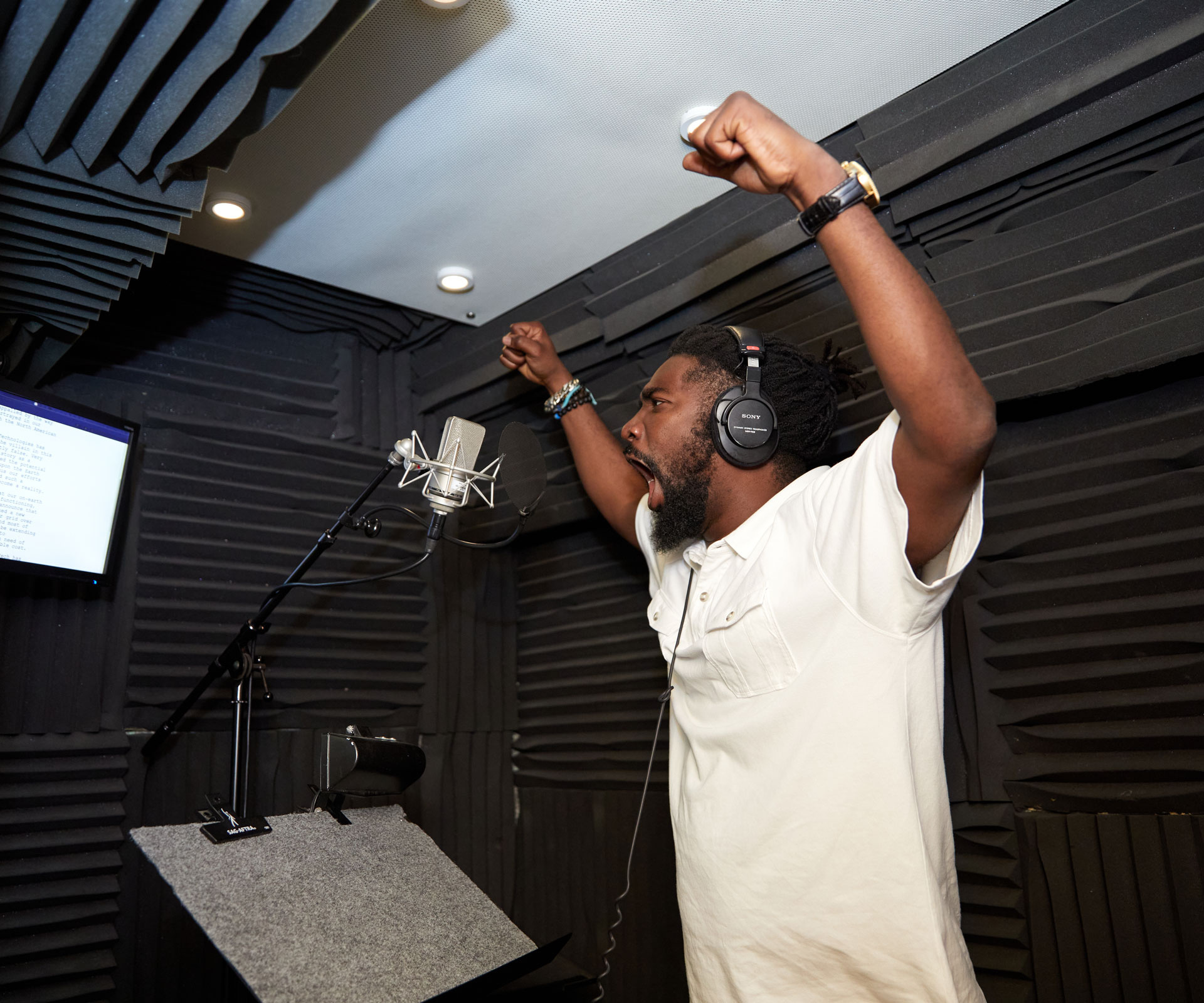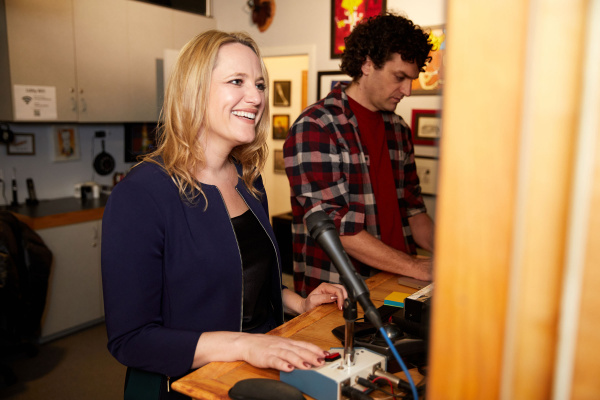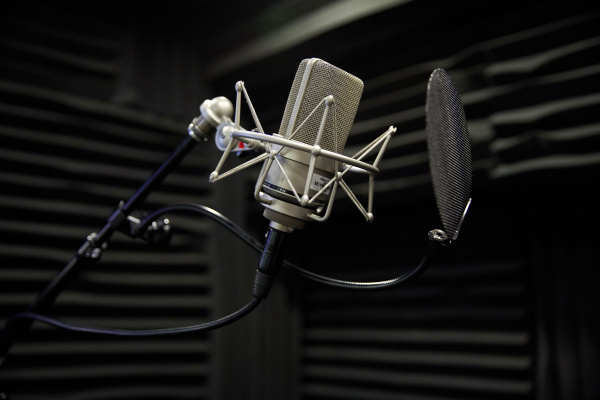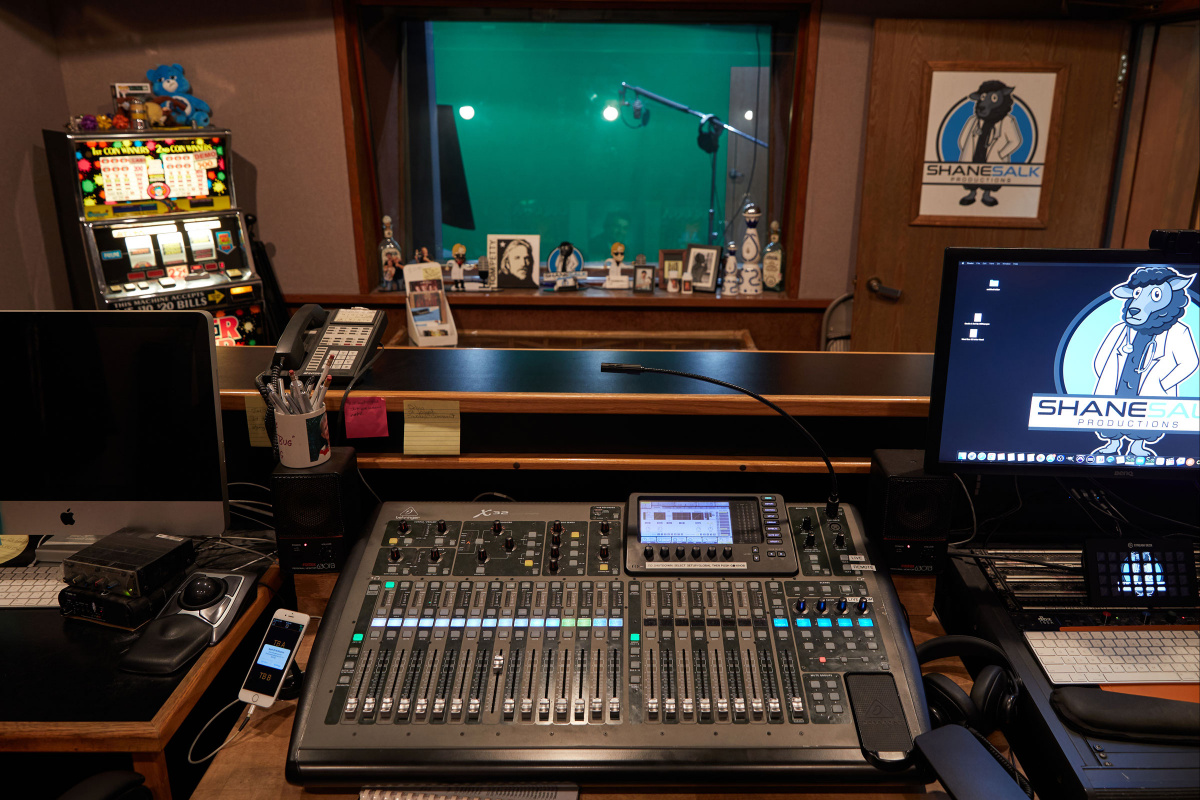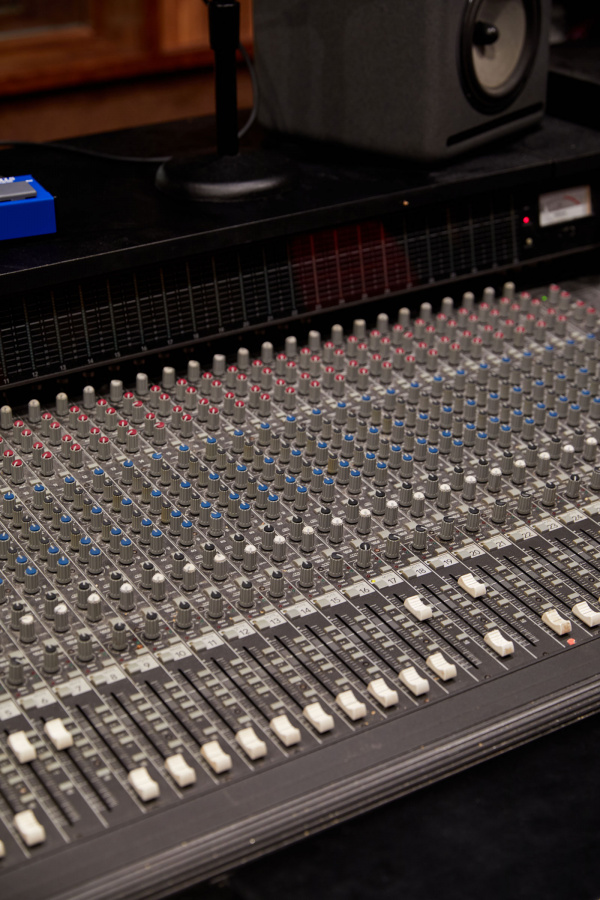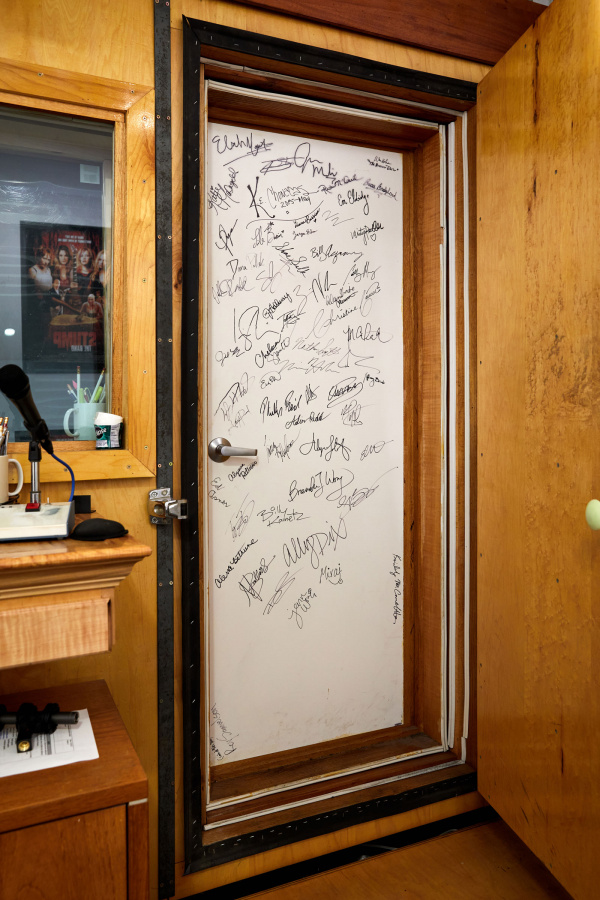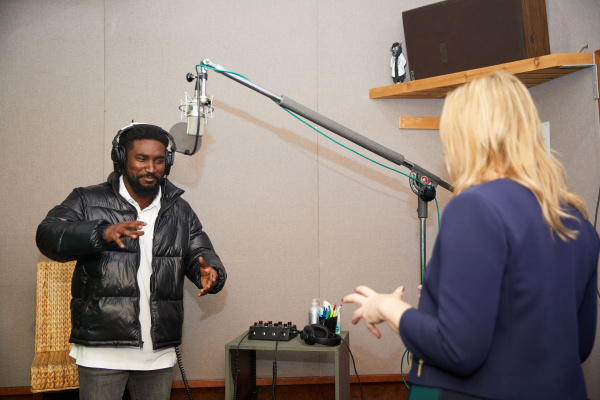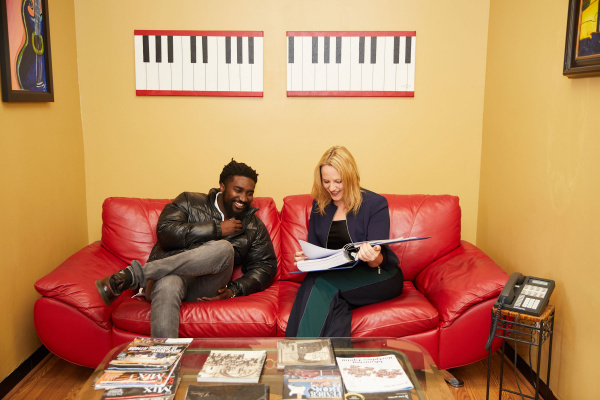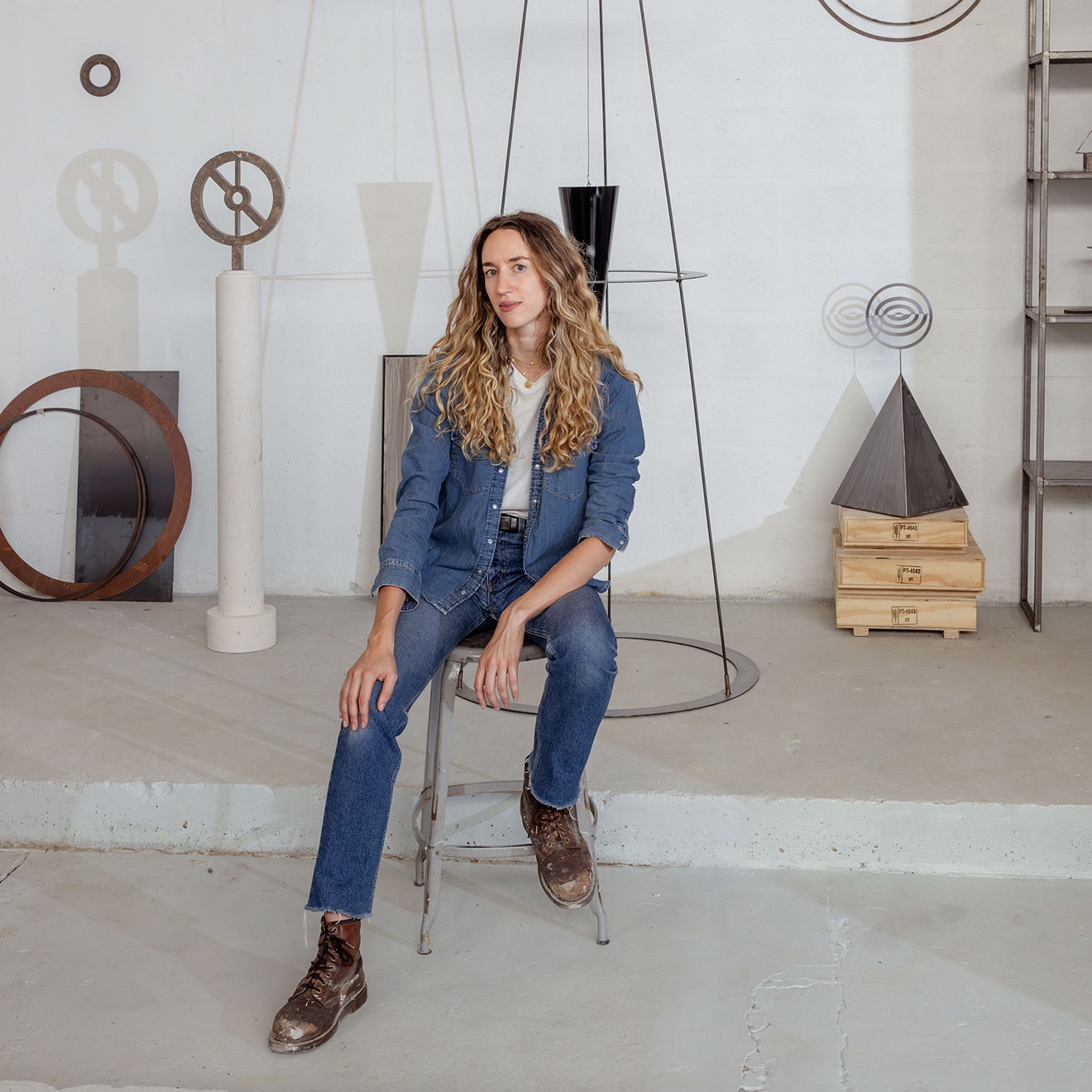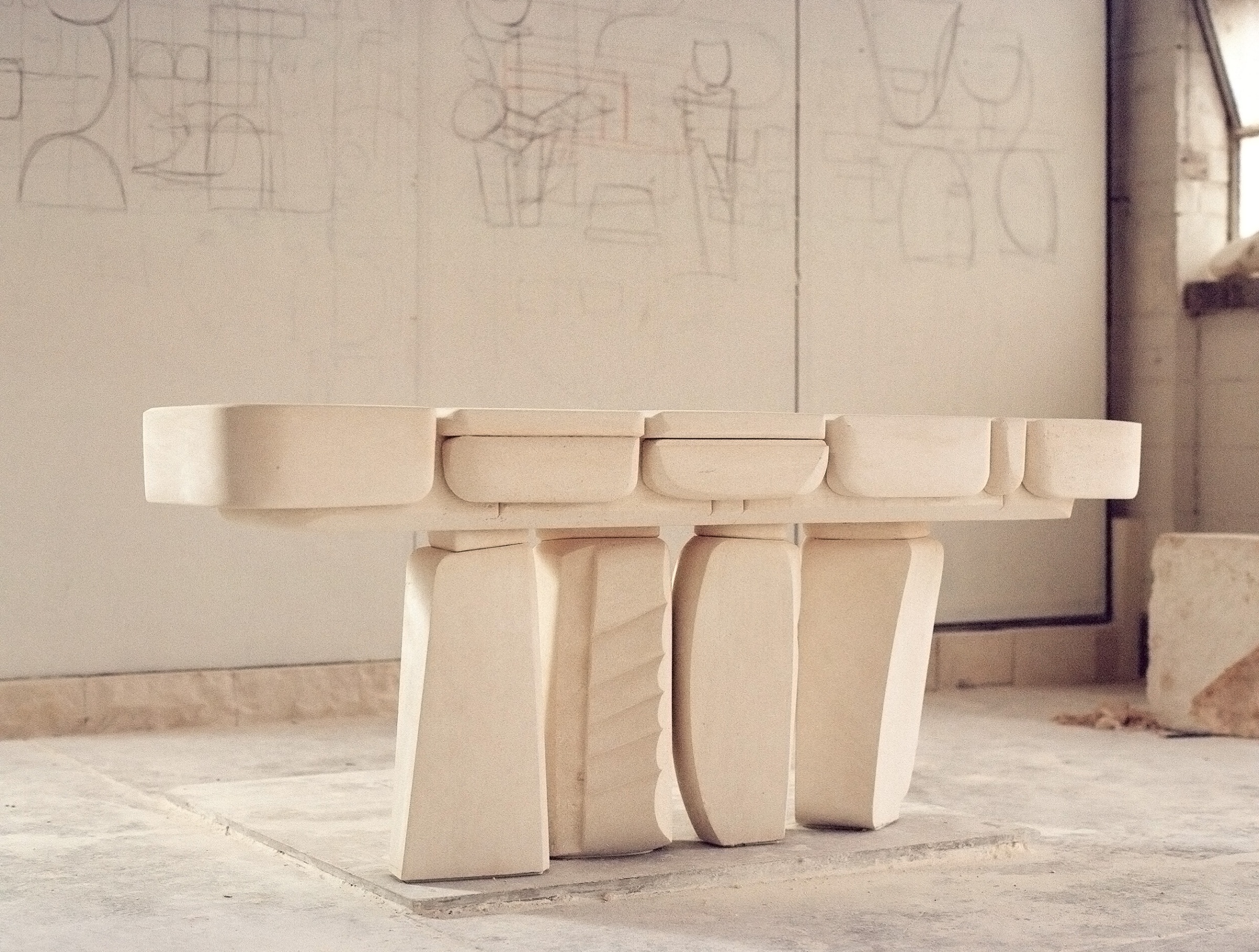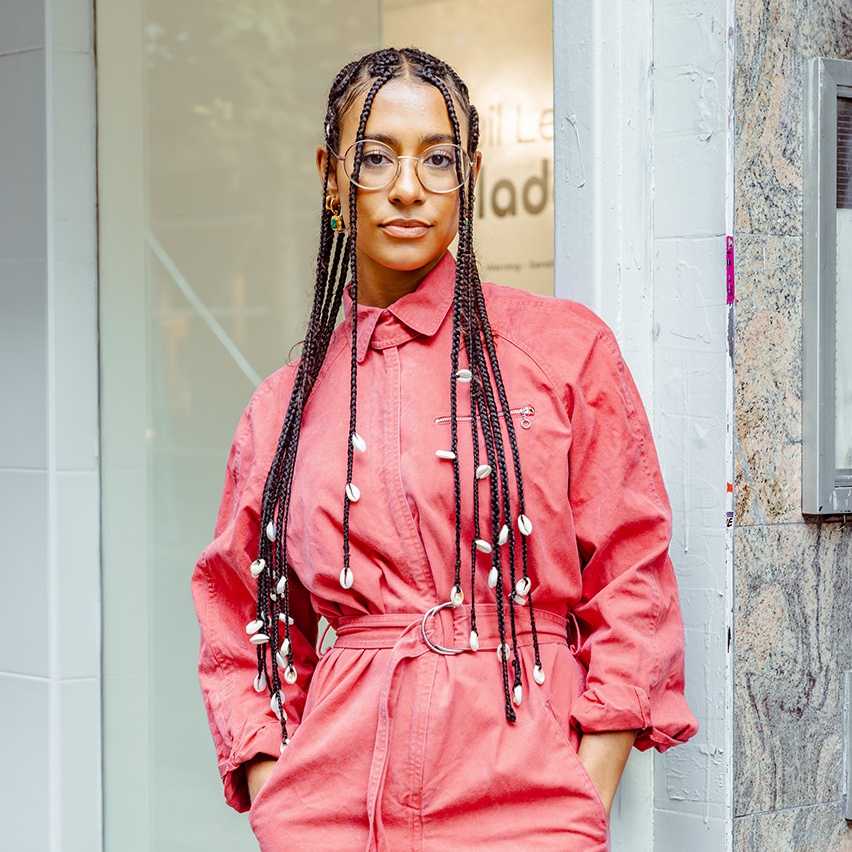Behind the Mic goes behind the scenes to photograph some of the most exciting podcast studios across the world, documenting the creative and production processes as well as the technology used to bring each episode to life.
SOLAR opens with a bang. Literally. “Mission Control, do you read?” shouts a woman’s voice over the rumbling of a ship, a glitching communication system, and screams of fellow passengers. The sounds move around the listener, as if we are in the ship itself. With your eyes closed, you can almost feel yourself on a spaceship. It’s breaking apart, as close to the sun as humanly possible. Will you stay aboard, or get sucked off into space? “Mayday! Mayday!” From the get-go, we are in it.
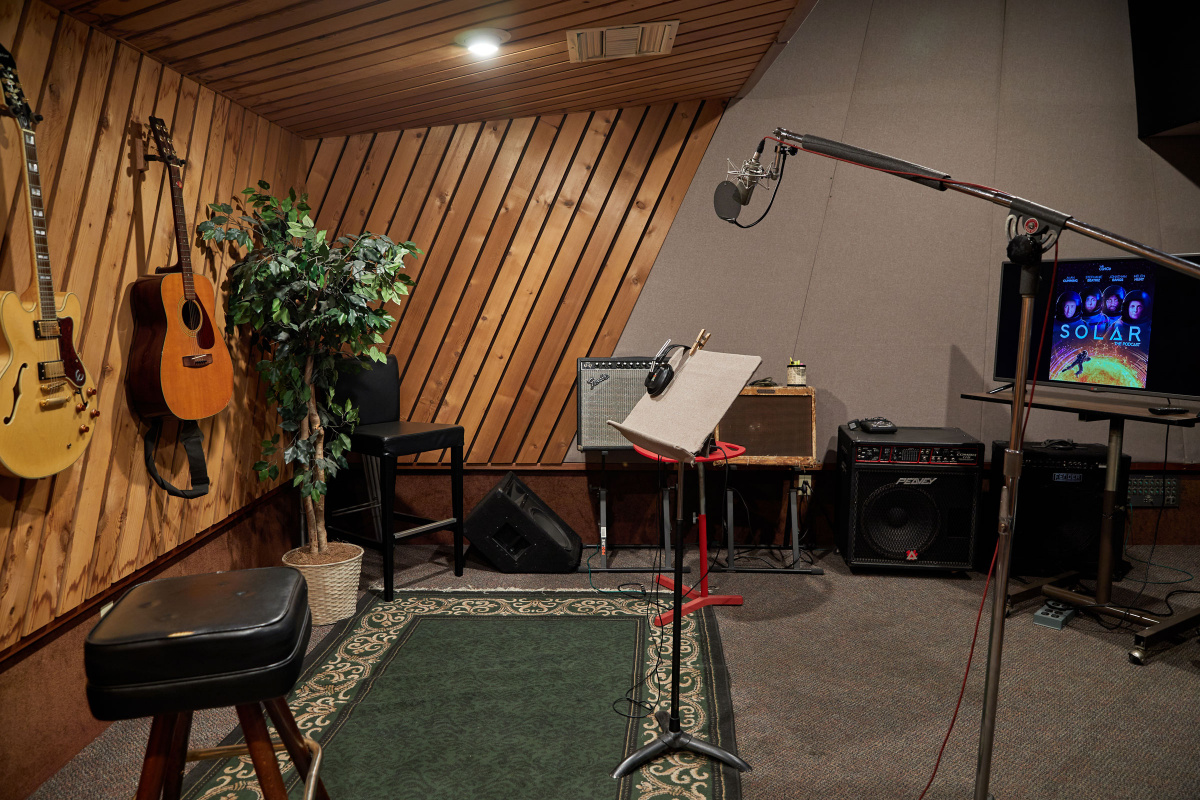
Photo by Ye Rin Mok
- Photo by Ye Rin Mok
- The SOLAR podcast uses a TLM 103. Photo by Ye Rin Mok
Welcome to SOLAR, a narrative podcast from CurtCo Media. The year is 2045. After a solar flare wreaks havoc on Earth and in space, the North American Space Coalition (NASC) has located the remains of the Aethon—a research probe that too was maimed in the flare. Only two crew members remain: Wren (Stephanie Beatriz) and Jamal (Jonathan Bangs); well, three, if you count the glitching-out Aethon Language Interface (or Ali; voiced by Jenny Curtis) who can’t even tell Jamal which direction the sun is anymore. Stranded in its orbit, Jamal and Wren have to use limited oxygen, broken communication systems to stay alive, and uncover what actually happened. The podcast jumps back and forth between the Aethon and Earth and past and present. We get to know Commander Alex Tawley (Tony winner Alan Cumming) and sketchy scientist Margaret Cohen (Oscar winner Helen Hunt) via old recordings of the ship—and learn things aboard the Aethon were spiraling long before the lethal disaster.
SOLAR uses 3D audio, meaning the sound of the podcast is all around you. Using both dearVR and Dolby Atmos to mix the show means that instead of using simple panning—where you can hear someone to your left, then someone to your right—SOLAR uses an entire 360-degree sphere of directionality. Listen to SOLAR in your headphones and you’ll hear someone up and to your right, or just over your head. If you, the listener, are sitting on the ship with your eyes closed, you can hear Wren next to you and Jamal’s muffled yells off to your upper-left; you can hear ALI doling out unhelpful information out in front of you; you can you hear a fan whirring above your head. Co-director Jenny Curtis credits this “audio blocking” to CJ Drumeller, SOLAR’s sound designer, mixer, and masterer; or, as Jenny calls him, “the god of sound.”
- Photo by Ye Rin Mok
Because of this technological aspect, each episode of this 12-episode audio drama begins not with a mattress ad, but with an artistic declaration: SOLAR is, in the words of creator Chris Porter in podcast’s first seconds, “a fully staged sonic experience of cinematic proportions.” SOLAR was not a Covid-era home project born from pandemic boredom. It’s a fully conceived auditory experience, a superhero movie for your ears. And as such, its creators implore you to enjoy the podcast with headphones—more on that later. “However you choose to go on this mission, we encourage you to immerse yourself on this journey to the heart of our solar system,” Chris says.
Immerse. That’s the word that drives everything about SOLAR. It drives the intimate acting performances, the storytelling, the recording technology selection. Indeed, it drives much of the work its creators do outside of SOLAR, too. The podcast’s creators, Chris and Jenny, have collaborated for years in one of LA’s leading site-specific theater companies, the Speakeasy Society. That’s also where they met Jonathan, who plays Jamal on SOLAR. The Speakeasy Society produces off-the-wall performances in off-the-beaten-path spaces throughout the City of Angels. Take, for instance, their critically acclaimed show The Johnny Cycle. The adaptation of Dalton Trumbo’s Johnny Got His Gun took place in a mausoleum and cast the audience as the titular character. Weird? Yes. But there’s a method to the madness.
- Photo by Ye Rin Mok
- Photo by Ye Rin Mok
“If the point of creative endeavors is to physically affect your audience and have a moment with the people who are experiencing your art, [immersive theater] is the fastest way to do it,” says Jenny, media director of the Speakeasy Society. “You’re holding their hands and you’re looking them in the eyes, and you’re physically interacting with them.” Such reverence for the art of immersive theater is at the core of SOLAR and has been from its inception. Indeed, luxuriating in long monologues and extended two-person scenes, the podcast feels structurally more like a play than a TV show. From the show’s early days, Chris and Jenny found themselves pondering, How do we put this immersive experience of live theater into auditory form? And how, exactly, do we make an immersive auditory experience for our audience?
The answer: a creative team willing to get weird, and really, really good recording technology.
Which is to say, top-tier recording equipment was a must from day one. Jenny and Chris met with Shane Salk—a recording engineer and owner of Shane Salk Productions, where the team recorded—early on in the project. “It just became clear that they were going high value, high quality,” Shane says. “They did it right. No cutting corners.” This meant using a battalion of excellent recording technology, which included the Neumann TLM 103 condenser microphone. Shane explains microphones like cameras: the more pixels you have in a photo, the more you can zoom in and retain clarity. With the Neumann TLM 103, the more you “screw with it in post,” or the louder you make it, the fewer bits of “sound junk” you can hear.
Most of that sound design happened in editing, though. Jenny and Chris were co-directors on the project, with Jenny directing the performances and Chris directing post-production. Jenny, an actor herself, uses a “performance-first” approach when directing: She likes to record scenes as a whole rather than line by line and to get every line read option possible—a self-described “perfectionist.” (It makes her life harder while editing but ensures excellent performances.) The recording process itself took place in early 2021, before Covid vaccines were easily and widely available, so only one actor could record in the booth at a time. Jenny performed as the scene partner to whomever was in the booth. “It was pretty similar in that theatrical element, just acting with the person across from me,” Jonathan says. “It was kind of an amazing process because Jenny can actually perform.”
- Photo by Ye Rin Mok
- Photo by Ye Rin Mok
Indeed, Jonathan didn’t meet any of his costars—Alan recorded remotely, from Upstate New York, and Helen Hunt was the final cast addition and thus recorded last—except Stephanie, mostly thanks to these one-actor-at-a-time Covid restrictions. The two recorded just one (very important, but no spoilers) scene together. As lonely and awkward as that might sound, it worked perfectly for the podcast. Jonathan and Stephanie’s characters, Jamal and Wren, are trapped on opposite points of the Aethon apart from each other, going mad in their little boxes as their oxygen supply ticks away. That isolation rings through Jonathan’s quiet, confessional performance. We meet Jamal at his lowest point, grappling with his own mortality, and yet he provides a ray of hope in the show. It’s a tricky line to thread, and it’s why Jenny and Chris had Jonathan in mind to star from the get-go.
“He has this really magical ability to just crack his heart open, and just leave it there,” Jenny says. Put on the right set of headphones, and you can even hear that crack in real time.
